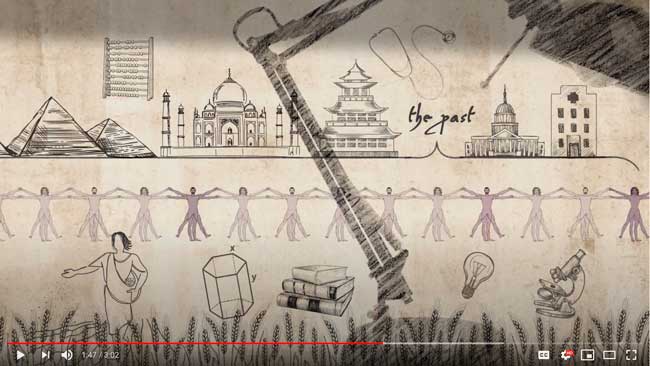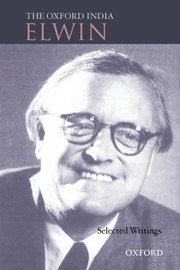The natural wealth with which much of tribal India is endowed is also its bane. The erstwhile Bastar district, one of the largest in the country, was first divided into three, and later into seven parts, each with a separate administrative system. In the guise of bringing governance closer to the people – let us, for convenience, assume that the Adivasi people crave government – corporate and bureaucratic channels have been efficiently established, and lead to the mineral-rich hinterlands. […] The Adivasi is wedged between the state programme for development, meaning mines, dams, steel plants and roads, and a private agenda for quick money, which is currently termed ‘real estate’.
Madhu Ramnath, Preface for Woodsmoke and Leafcups (HarperCollins India, 2015), p. xxix
Review by Felix Padel
Woodsmoke and Leafcups; Madhu Ramnath, Harper Litmus, Rs.399.
To read the full article, click here >>
The full joy of tribal life opens up in these pages. As do the painful struggles under the exploitative thumb of the state […]
But Woodsmoke is written with deceptive, disarming simplicity, unfolding the social structure of a tribal people near the epicentre of today’s Maoist conflict through stories and anecdotes. The book is cheekily subtitled ‘Autobiographical footnotes to the anthropology of the Durwa’, a tribe that few of India’s reading public will have even heard of. There are many levels to this work, and one level is that of storytelling at its best through true stories of a tribal people’s daily life, and the interferences and abuses of power that come from government officials, politicians, lawyers — exploiters and manipulators of every hue.
The full joy of tribal life opens up in these pages without the slightest romanticisation. […]
Land questions loom large in Adivasi life, as we all know, and this book bears witness to rarely-articulated yet vital aspects of the vast struggles over land and territory that haunt tribal areas. For one thing, Ramnath shows how the traditional hunting territories of the clans that make up a village constitute its actual, culturally recognised territory, which goes far deeper than any written records of ownership. […]
The Durwas have suffered such incursions, where leaders of incoming groups befriended Durwa youth, took over hunting territories, cleared the forests, and began to question the authority of Durwa elders, who had managed these tracts of forest sustainably as hunting territories ‘since time began’.
And when ‘communist’ politicians come on the scene, and send out a message that all such land claims will be back-dated to allow cleared forest to be legitimised and more forest lands to be taken over and cleared as well, no force seems able to prevent this destruction. This reality is presented through many examples, adding immensely important detail to one’s deeper understanding of the forces at play.
The backdrop of the Maoist conflict is not tackled explicitly, though Durwas live right in the heart of the civil war engulfing the Bastar region, divided between the erstwhile Bastar (South Chhattisgarh) and Malkangiri districts of Odisha. […]
This is a book highly recommended for anyone who wants to journey into a deeper understanding of tribal cultures, which currently face genocide in Central India. It is one of the most vivid, down to earth, and readable books ever written about a tribal people in India.
Felix Padel is an anthropologist and writer who has worked on tribal and environmental issues in India over many years.
Source: “Felix Padel reviews Woodsmoke and Leafcups”, The Hindu, 12 March 2016
Address: https://www.thehindu.com/books/literary-review/felix-padel-reviews-woodsmoke-and-leafcups/article8341808.ece
Date Visited: Thu May 05 2016 12:26:46 GMT+0200 (CEST)
Land questions loom large in Adivasi life, as we all know, and this book bears witness to rarely-articulated yet vital aspects of the vast struggles over land and territory that haunt tribal areas. For one thing, Ramnath shows how the traditional hunting territories of the clans that make up a village constitute its actual, culturally recognised territory, which goes far deeper than any written records of ownership. […]
Many factors have combined to disturb this. For a start, other tribal groups have come in. The Durwas have suffered such incursions, where leaders of incoming groups befriended Durwa youth, took over hunting territories, cleared the forests, and began to question the authority of Durwa elders, who had managed these tracts of forest sustainably as hunting territories „since time began‟.
Book Review (PDF): Felix Padel reviews Woodsmoke and Leafcups by Madhu Ramnath | The Gandhi Foundation >>
Date accessed: 9 January 2020
Different human cultures have their own ways of conserving plant and animal species—sometimes this is in the form of tiny sacred groves, and other times it could include entire hillsides. In Central India, individual plant species figure in the first fruit ceremonies of the adivasi (indigenous) communities. During certain periods of the year, their fruits, flowers, leaves or seeds are not collected or consumed. This allows those species to rest for a few weeks or months during crucial periods for their growth or regeneration.
The norms around these practices or methods are often embedded within the cultural-religious traditions of communities. As a knowledge system being transferred between generations, seldom are they explained or discussed in terms of ecology or conservation.
Source: “How culture threatens species A note on Caryota urens in South India” by Madhu Ramnath, current conservation 16.3
URL: https://www.currentconservation.org/wp-content/uploads/2022/11/16.3.pdf?utm_source=newsletter&utm_medium=email&utm_campaign=16_3
Date Visited: 4 December 2022

Watch “The Good Ancestor – The Legacies We Leave” (3 min.): An animation that explores the legacies we might leave for future generations >>
Links to some of the most important organisations, thinkers and doers that are leading the way and that have inspired the book The Good Ancestor by Roman Krznaric >>
Tribal communities in the central Indian region of Bastar:
Baiga | Bhatra | Dhruva | Gond | Halba | Madia | Maria | Muria
Up-to-date reports by Indian journalists and commentators
To search Indian periodicals, magazines, web portals and other sources safely, click here. To find an Indian PhD thesis on a particular tribal community, region and related issues, click here >>
Search tips
Combine the name of any particular state, language or region with that of any tribal (Adivasi) community.
Add keywords of special interest (music, poetry, dance just as health, sacred grove and biodiversity); learn about the rights of Scheduled Tribes such as the “Forest Rights Act” (FRA); and the United Nations “Declaration on the Rights of Indigenous Peoples”, “Universal Declaration of Human Rights”, “women’s rights”, or “children’s right to education”.
Ask a question that includes “tribal” or “Adivasi”, for instance: “Adivasi way of life better?” (or “tribal way of life worse?”)
Specify any particular issue or news item (biodiversity, bonded labour and human trafficking, climate change, ecology, economic development, ethnobotany, ethnomedicine, global warming, hunter-gatherers in a particular region or state, prevention of rural poverty, water access).
For official figures include “scheduled tribe ST” along with a union state or region: e.g. “Chhattisgarh ST community”, “Himalayan tribe”, “Scheduled tribe Tamil Nadu census”, “ST Kerala census”, “Particularly Vulnerable Tribal Group Jharkhand”, “PVTG Rajasthan”, “Adivasi ST Kerala”, “Adibasi ST West Bengal” etc.
In case the Google Custom Search window is not displayed here try the following: (1) toggle between “Reader” and regular viewing; (2) in your browser’s Security settings select “Enable JavaScript” | More tips >>
Note: hyperlinks and quotes are meant for fact-checking and information purposes only | Disclaimer >>
Cyrus Mistry, Outlook, 22 February 2016
Having spent three decades walking along the foot-worn paths of Bastar, Madhu Ramnath casts an impassive eye on the land of his life-long love
There’s something absolutely unique about this book. […]
Madhu Ramnath, author of this book, is not an anthropologist by training. Yet, his passionate engagement with the adivasis of Bastar, his obsessive interest in their way of life, his personal devotion and commitment to the people and their concerns, are all akin to those of a dedicated student of other cultures and societies. With one big difference: there’s nothing academic about Ramnath’s immersion in, or his love and fascination for the world of the indigenous people of Bastar. His record of living in their midst is empathic and keenly perceptive—so that for him, as for the reader, the process of coming to grips with this unique way of life is in the nature of a constant maturing. […]
Source: Aranya Parva: A Forest Of Meaning…And Belonging
Address: https://www.outlookindia.com/magazine/story/aranya-parva-a-forest-of-meaningand-belonging/296633
Date Visited: Thu May 05 2016 12:44:17 GMT+0200 (CEST)
Bastar District is located in the southern part of Chhattishgarh and is situated at a height of 2000 ft plateau from sea level. Bastar had population of 1,411,644 in 2011 including Kondagaon district, of which male and female were 697,359 and 714,285 respectively. Of the total population more than 70 per cent are tribal people like Gond Tribe, Maria, Muria, Dhruva, Bhatra, Halba Tribe, etc.
Source: District-Bastar, Chhattishgarh
Address: http://bastar.gov.in/about.htm
Date Visited: Sat Feb 11 2017 11:51:52 GMT+0100 (CET)
Tip: find more resources by typing “Durwa tribe”, “Bastar tribal custom”, Adivasi land rights”, “tribal village culture”, “tribe hunting India”, “Felix Padel” or any combination of keywords in the worldcat.org search field
Find publications by reputed authors (add “open access” for freely downloadable content)

“Is it eccentric to live in beautiful scenery in the hills among some of the most charming people in the country, even though they may be ignorant and poor?” – Verrier Elwin quoted by G.N. Devy in The Oxford India Elwin >>
Learn more
Anthropology | Irish Journal of Anthropology | Folio Special issue
Colonial policies | History | Indus Valley | Mohenjo Daro
eBooks, eJournals & reports | eLearning
eBook | Background guide for education
Ekalavya (Eklavya)
Forest Rights Act (FRA) | Hunter-gatherers | Nishad (Nishada, Sanskrit Niṣāda, “tribal, hunter, mountaineer, degraded person outcast”) | Vanavasi (Vanvasi, Vanyajati)
India’s Constitutional obligation to respect their cultural traditions
Jawaharlal Nehru’s “five principles” for the policy to be pursued vis-a-vis the tribals
Particularly vulnerable tribal group (PVTG)
Rabindranath Tagore: a universal voice – Unesco
Remembering Birsa Munda: The charismatic tribal leader who shook the British Empire – Jharkhand
Scheduled Tribes | Classifications in different states
Video | Adivasi Academy & Museum of Adivasi Voice at Tejgadh – Gujarat
Video | Tribes in Transition-III: “Indigenous Cultures in the Digital Era”
What is the Forest Rights Act about?
Who is a forest dweller under this law, and who gets rights?